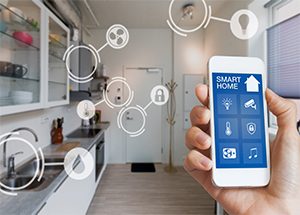
PLUS embarks on a digital transformation journey with Microsoft to modernize the highway experience in Malaysia
June 25, 2019
Quantum Expands Offerings with New Line of Distributed Cloud Services and Cloud-Based Analytics Software
June 27, 2019The Internet of Disposable Things (IoDT) Using Biobatteries?


Imagine a sensor in your refrigerator that monitors the freshness of your food letting you know when something is about to expire. Or, how about a sensor on your prescription bottle alerting you that it’s time for your refill, or where to properly dispose of the bottle just before you think about throwing it away.
These ideas are not far off from reality. This new phenomenon is called the Internet of Disposable Things (IoDT) and using environmentally-friendly batteries to operate devices…specifically speaking: bacteria-powered biobatteries.
What is the Internet of Disposable Things (IoDT)?
The IoDT emerged as a simple, low-cost and powerful advancement for wireless sensor networks. IoDT is based on the concept of using wireless sensors attached to disposable devices to provide up-to-date information via the Internet. The goal is that IoDT sensors would apply to small paper or plastic devices that inevitably will be thrown away. In other words, single-use IoT devices. As a result, these sensors would allow Internet connection for a short duration.
The Office of Naval Research funded $510,000 towards this biobattery project. Researchers from Binghamton University and State University of New York developed the micro biobattery that could power these disposable sensors. Seokhuen Choi, an associate professor on this research project, states that these bacteria-powered batteries are designed to be low-cost, disposable and environmentally-friendly.
More about the Biobattery
Here are some highlights of the micro biobattery:
- It is bacteria-powered and has microbial fuel cells
- It is intended to power single-use IoT devices
- It has the potential to operate for more than 8 days
- In a test, it had a current density that was greater after 96 hours of operation than a liquid-based control device that stopped generating within 4 hours.
Overall, these researchers created a micro-sized bacteria-powered biobattery for potentially powering unattended IoDT applications. This could be a low-cost, environmentally-friendly solution that we start to see with our IoT devices in the near future.
The post The Internet of Disposable Things (IoDT) Using Biobatteries? appeared first on Actiontec.com.

